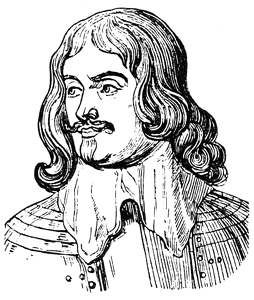 |
 |
|||
|
|
William was the eldest son of Sir William Craven Senior, a city magnate, and Elizabeth Whitmore, the daughter of a London Alderman. He inherited his fatherís vast fortune at the age of about ten and, after a brief career at Trinity College, Oxford, he took up soldiering, perhaps in order to shake off the commercial associations of his parentage by entering the chief profession of the gentleman of his day. If this was his object, he was surprisingly successful, for, in recognition of his martial services on the continent, he was raised to the peerage, as Baron Craven of Hamstead Marshall, at the age of only twenty-one. In 1632, he sailed for Germany as one of the leaders of the English force enlisted to serve under Gustavus Adolphus in the hope of restoring King Charles Iís sister, Elizabeth, Queen of Bohemia, and her husband, Frederick, to the Palatinate. He fought with distinction and was wounded. Like so many of the warriors of the age, he appears to have fallen under the spell of the ill-fated Elizabeth, whose service thenceforth became the chief purpose of his life. In 1637, he spent his great wealth lavishly in fitting out another expedition to North Germany, but the army was defeated and Craven, again wounded, was taken prisoner together with Prince Rupert. After remaining some time in captivity, he ransomed himself at a high price. Thenceforward, he maintained an intimate correspondence with Elizabeth, assisted her cause with large sums of money and eventually became a regular resident at her wandering European Court. Being absent from England, he took no active part in the Civil War, but he sent to Charles I large subsidies. This gave Parliament, in 1651, an excellent excuse for confiscating his vast estates, particularly in Berkshire, though apparently not Coombe Abbey in Warwickshire. In spite of this misfortune, he remained faithful to Elizabeth, until the Restoration afforded him an opportunity of giving still further practical proof of his devotion to the Royal family. Craven was made lieutenant-general, loaded with offices and finally created an earl. As Charles II would at first make no provision for Elizabeth, Craven put his own London house, in Drury Lane, at her disposal. She came to England in 1661 and remained his guest until just before her death. It is said that, at this time, he was having the great Ďpalaceí of Hamstead Marshall in Berkshire built for her as a miniature Heidelberg Castle. Further rumours abounded that they had been privately married, but of this there is no sufficient proof. Craven continued to be a person of importance at the Courts of Charles and James II and the close friend of Prince Rupert. In the days of the plague of London (1665), he is said to have fled on horse back to his Berkshire estates. Where his mount halted, at Ashdown Park, he decided to build himself a safe country residence. Later, however, ashamed at his actions, he returned to the city and devoted himself to the relief of sufferers. He also gave large plots of land, near what is now Carnaby Street, for the burial of the dead. During the time of the Great Fire, he also actively exerted himself. Indeed, it is a well-known anecdote that his horse knew the smell of a fire at a great distance and was in the habit of immediately galloping off with him to the spot. When William IIIís Dutch troops came to take possession of the guard at St. Jamesí Palace and Whitehall, in 1687, he refused to withdraw until authorised by King James to do so. Afterwards, though deprived of his regiment and other appointments, he seems to have made his peace with the new king without difficulty and the last ten years of his long life were spent in retirement on his numerous estates. There is no reason for thinking that he was a man possessing any exceptional talents, but the chivalrous knight-errantry which led him to devote himself and his resources unstintingly to the service of Elizabeth lends his character a romantic and curious distinction. His brother, John, was the founder of the Craven Scholarships at the two Universities. Edited from CRL Fletcher's 'Historical Portraits' (1911)
|
|||
| © Nash Ford Publishing 2001. All Rights Reserved. | ||||



 William
Craven,
William
Craven,